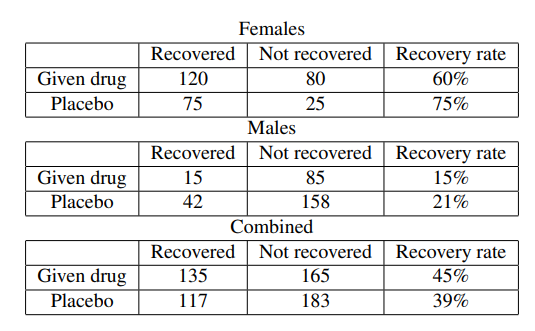Question
Simpson's paradox. Consider a medical trial in which patient treatment and outcome are recovered. Two trials were conducted, one with 300 females and one with
Simpson's paradox.
Consider a medical trial in which patient treatment and outcome are recovered. Two trials were conducted, one with 300 females and one with 300 males. The data are summarised in the table below. Does the drug cause increased recovery? According to the table for males, the answer is no, since more males recovered when they were not given the drug than when they were. Similarly, more females recovered when not given the drug than recovered when given the drug. The conclusion appears that the drug cannot be beneficial since it aids neither subpopulation. However, ignoring the gender information, and collating both the male and female data into one combined table, we find that more people recovered when given the drug than when not. Should we recommend the drug? a Bayes net for this problem needs to be constructed. How is it possible to avoid the 'paradox' by sampling?

Step by Step Solution
There are 3 Steps involved in it
Step: 1

Get Instant Access to Expert-Tailored Solutions
See step-by-step solutions with expert insights and AI powered tools for academic success
Step: 2

Step: 3

Ace Your Homework with AI
Get the answers you need in no time with our AI-driven, step-by-step assistance
Get Started


